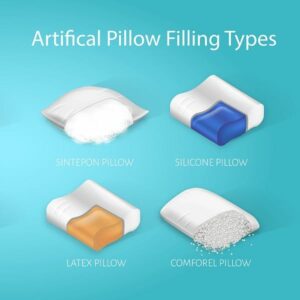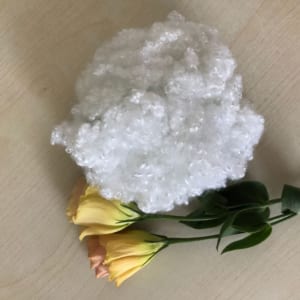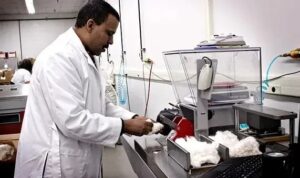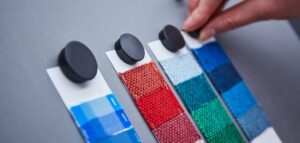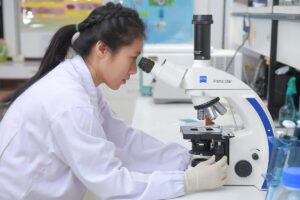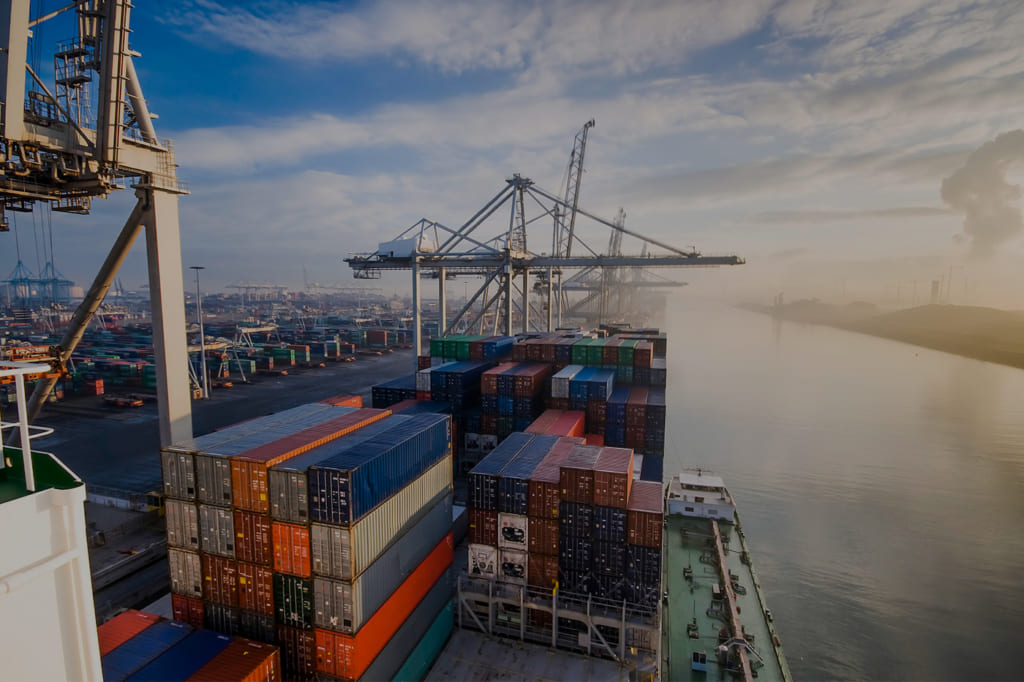Polyester wadding production
Polyester wadding is a type of padding made from polyester fibers. It’s commonly used in applications such as upholstery, bedding, clothing, and insulation. The production of polyester wadding involves several steps, including fiber production, fiber processing, wadding formation, and finishing. Here’s a detailed look at the process:
1. Fiber Production
Polymerization:
- Polyester fibers are made from polyethylene terephthalate (PET), which is derived from petrochemicals.
- The process begins with the polymerization of ethylene glycol and terephthalic acid to form PET.
Extrusion:
- The PET is melted and extruded through a spinneret to form continuous filaments.
- These filaments are cooled and solidified.
Drawing:
- The filaments are then drawn (stretched) to align the molecular chains and increase tensile strength.
Crimping:
- The drawn fibers are crimped to add bulk and improve the resilience of the wadding.
Cutting:
- The crimped fibers are cut into short lengths, typically ranging from 1 to 6 inches, depending on the end-use application.
2. Fiber Processing
Blending:
- The cut fibers are blended to ensure uniformity and consistency. This may involve mixing fibers of different deniers or blending recycled fibers with virgin fibers.
Opening and Carding:
- The blended fibers are opened and separated into individual fibers using an opener.
- Carding machines further disentangle, clean, and intermix the fibers to produce a continuous web of fibers.
3. Wadding Formation
Cross-Lapping:
- The fiber web is layered in multiple directions using a cross-lapper. This creates a thicker, multi-layered structure, which contributes to the loft and insulation properties of the wadding.
Needle Punching or Thermobonding:
- Needle Punching: The layered web is mechanically bonded by passing it through a needle-punching machine. Barbed needles repeatedly punch through the web, entangling the fibers and forming a cohesive fabric.
- Thermobonding: Alternatively, the web can be thermally bonded by heating it to partially melt the fibers and fuse them together. This can be done using hot air ovens, infrared heaters, or through calendaring (passing the web through heated rollers).
4. Finishing
Trimming and Cutting:
- The wadding is trimmed and cut to the desired dimensions, based on the specific requirements of the application.
Treatment:
- The wadding may undergo additional treatments to enhance its properties, such as flame retardancy, water resistance, or antimicrobial finishes.
Inspection and Quality Control:
- The final product is inspected for uniformity, density, thickness, and other quality parameters to ensure it meets the required standards.
Applications
Polyester wadding is used in a variety of applications, including:
- Bedding: Quilts, duvets, mattress pads, and pillows.
- Upholstery: Padding for furniture and automotive seats.
- Apparel: Insulating layers in jackets, coats, and other garments.
- Insulation: Thermal and acoustic insulation in construction and industrial applications.
Environmental Considerations
- Recycling: Polyester wadding can be made from recycled PET bottles and post-consumer polyester products, reducing environmental impact.
- Sustainability: Advances in polyester recycling technologies and the development of bio-based polyester fibers are contributing to more sustainable production practices.
Polyester wadding production involves a combination of mechanical and thermal processes to convert polyester fibers into a versatile padding material used in numerous applications. The industry continues to innovate towards more sustainable and eco-friendly practices.
Adhering to the concept of low carbon and environmental protection, we use recycled PET bottles as the basic raw material of hollow conjugate fiber, vigorously promotes the development of a green and sustainable economy, and provides warm and comfortable enjoyment for people’s lives.
Viet Nam Polyester Staple Fiber is man-made eco-friendly fiber with good quality and high standards compared to Huvis Hollow conjugate fiber, Indorama Ventures Polyester Fiber, Thailand PSF, Indonesia Polyester, China Polyester Staple Fiber, Ningbo Dafa Chemical Fiber, etc…
- Adopting unsymmetrical cooling-shaped technology, the fiber has a shrinkage effect in its section and comes into being permanent spirality tri-dimensional curl with a good puff.
- With high-quality imported bottle flakes, advanced facilities, strict quality detective methods, and a perfect management system ISO9000, our fiber is of good resilience and strong pull.
- Owing to the unique material formula, our fiber has better elasticity. With imported finishing oil, our fiber has excellent hand-feeling and anti-static effects.
- A good and moderate void degree not only guarantees the softness and lightness of fiber but also achieves a good warming preservation effect.
- It is an in-noxious chemical fiber with a stable performance. Different from animal and vegetable fibers like quill-coverts and cotton which are easily perished, our fiber is friendly to the environment and has gained the label of OEKO-TEX STANDARD 100.
- Its heat insulation rate is 60% higher than that of cotton fiber, and its service life is 3 times longer than that of cotton fiber.
Product application:
- Main raw material for spray bonded and thermal bonded padding
- Stuffing material for sofas, quilts, pillows, cushions, plush toys, etc.
- Material for plush fabric
Product specifications:
Fineness: 0.8D – 25D
Length: 32mm – 70mm
Type: non-siliconized, siliconized, semi-siliconized, flame retardant, antibacterial.
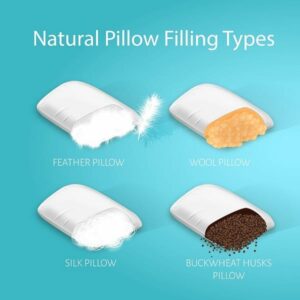
How to choose the best raw material for polyester wadding
Its fluffiness, high compression rebounding, resistance to both dry and wet cleaning, lightness, and heat isolation have made itself one of the most important materials to be used in the production of cotton clothes, ski jackets, space suits, quilts, sleeping bags, and other bedclothes, as well as some industrial supplies.
According to the formation principle of polyester wadding structure. Choices and surveys over fiber raw materials and bonding agents, along with production processes, have to be made to ensure good physical and mechanical performance. In which the choosing fiber raw materials have higher priority.
The type and specification of fiber raw materials have a decisive effect on the quality of polyester wadding products. As is requested by the application of polyester wadding.
Good choices for fiber fineness, length, curl degree, section shape, and surface treatment status have to be made to ensure ideal heat isolation, fluffiness, and soft touch.
As is known to synthetic fiber quality is the comprehensive composition of multiple indexes including the main performance of physical machinery, stability, processing.
Different production processes might not have identical requirements for performance indexes. As for the fiber used in polyester wadding. Thin fiber fineness, a high number of crimps, and curl degree, along with good fiber cohesion are required to guarantee good product elasticity and bulkiness.
Remarkably, the beginning of the curl uses a three-dimensional spiral curl, while the bulkiness and rebound rate of the product is clearly superior to that of a flat wave curl; the high hollowness ratio gives the product a greater heat retention rate and a lower density.
The type of lubricant, oil content, and moisture retention of the fiber not only affect the processing performance but also play a key role in improving the feel of the product and eliminating any static electricity that may arise from this process.
The most commonly used virgin hollow polyester fiber has a thickness of 6.6 to 7.7 dtex and a length of 51mm to 76 mm. Fibers of this specification have better performance as a whole; if it is overly short or thick, the feeling will become too rough.
Preferably the curl is a spiral three-dimensional crimp along with the common number of crimp from 0.5-0.6/mm. the hollow fiber between 5% to 10% would be favorable in case of the use of hollow fiber, which helps improve the hand feeling, elasticity, and heat isolation meanwhile reduces the amount of fiber. Mixing 30-70% of down feather fibers in regular polyester enables the production of feather-like sprayed cotton.
What we call ‘feather-like fiber’ is actually solid polyester fiber refined by silicone oil and is soft, lubricant, fluffy, and tangle-free. As result products made which feel fluffy and smooth, sharing feather features.
In addition to the variety, quality, processing methods, and conditions of fibers. The main factor affecting the quality of sprayed cotton is the adhesive emulsion quality.
There are two particular indicators of polyester wadding: compressive resilience and water-resistant.
The quality of the adhesive plays a decisive role in the performance of the polyester wadding. As polyester waddings are used for different purposes, therefore, the material and product specifications are varied.
Based on the above, different adhesives differ in thousands of ways in performance as well, so there are different types of adhesives with different performance levels.

